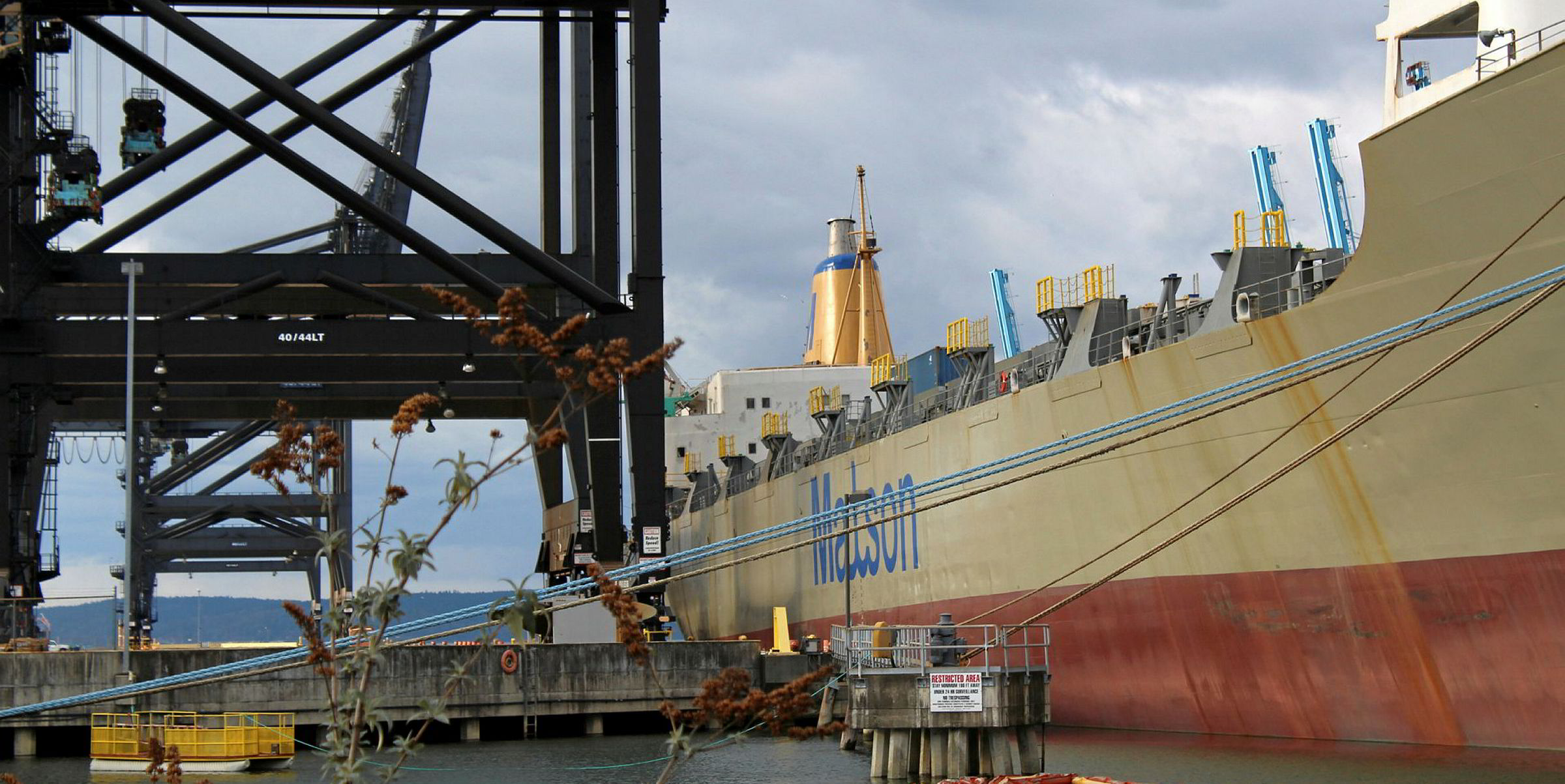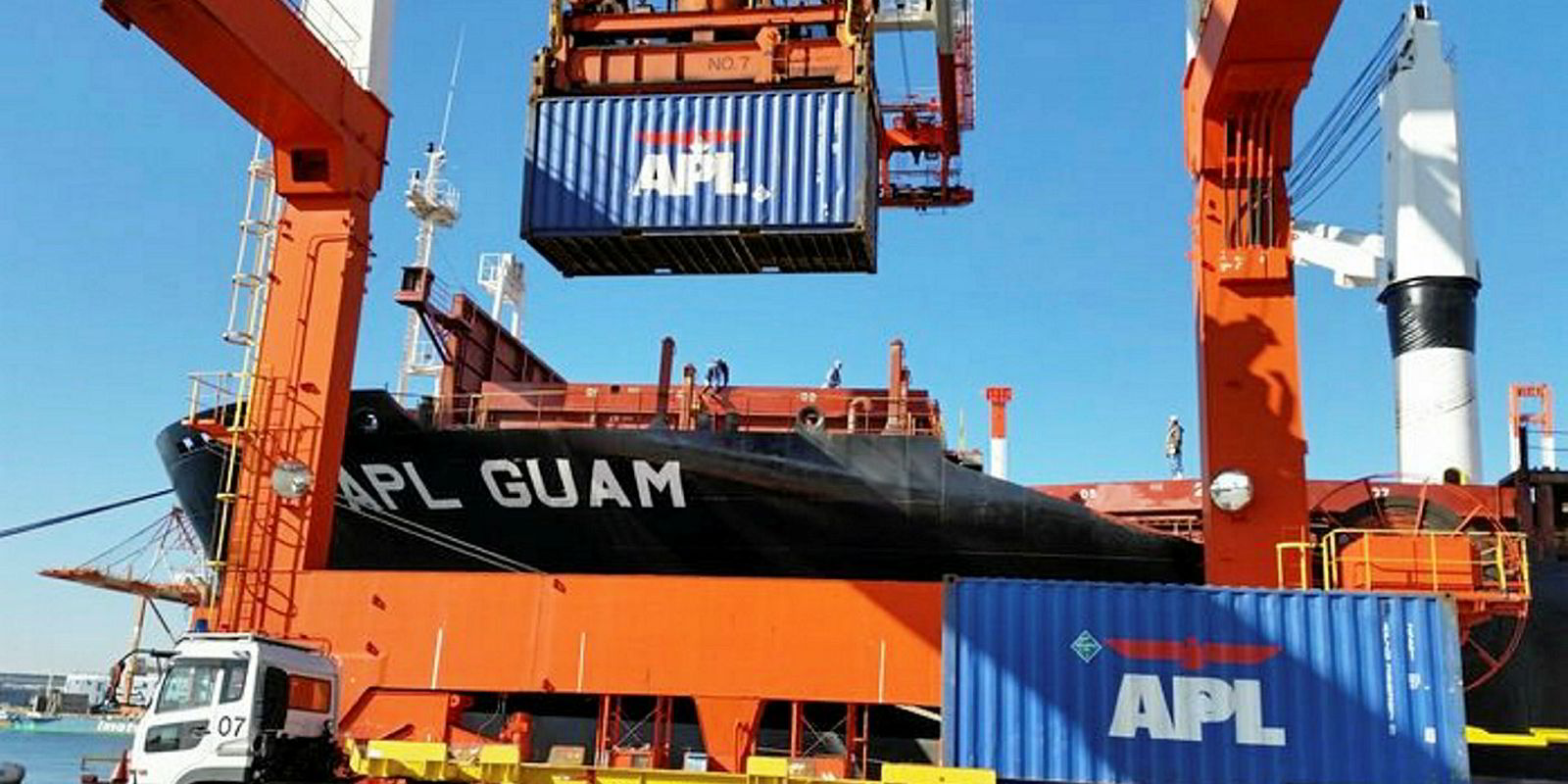Matson's Guam service continues to be a weak spot thanks to the ongoing battle — both in the courts and on the water — against APL.
On the US boxship owner's fourth-quarter earnings, chief executive Matt Cox said the number of containers carried by the Hawaiian boxship owner to the US territory decreased 3% in 2018 due to the "ongoing competitive situation" that started when APL entered the trade in 2015.
"Given our long history in Guam with strong customer ties, much shorter transit times and a much better on-time performance record, we do expect to retain an outsize share of the market," Cox said.
Otherwise, New York-traded Matson reported container volume growth of 2.5% in Alaska for 2018 with a 0.7% decline in Hawaii and a 6.7% decline in China.
But the company posted $20.6m profit in the fourth quarter with $0.43 earnings per share, beating analyst expectations by $0.10. The results were a year-over-year improvement, adjusting for tax impact. And the company attributed the drops in Hawaii to eastbound backlog and in China to capacity and demand volatility.
In the past, Cox had described the competition in the Guam trade as an "axe fight".
According to Securities and Exchange Commission filings, Matson's Guam business grew more than 60% by container volume between 2011 and 2014. Since APL entered the fold, container volume has fallen by 17.5%.
For its part, Matson has worked to strip federal Maritime Security Program subsidies from two APL ships, the 1,089-teu APL Guam (built 2001) and 1,638-teu APL Saipan (built 2002).
The programme pays $5m to shipowners in exchange for making their vessels available for defense purposes in the case of war or national emergency. Matson alleges the $10m flowing into APL's coffers give the CMA CGM subsidiary an unfair advantage.
The legal challenge is making its way through Washington, DC, federal court. Matson had originally only sued the US Department of Transportation and the Maritime Administration.
APL, which has said the suit "lacks merit", was initially not named as a defendant. Earlier this month, the court allowed the liner operator to intervene.





